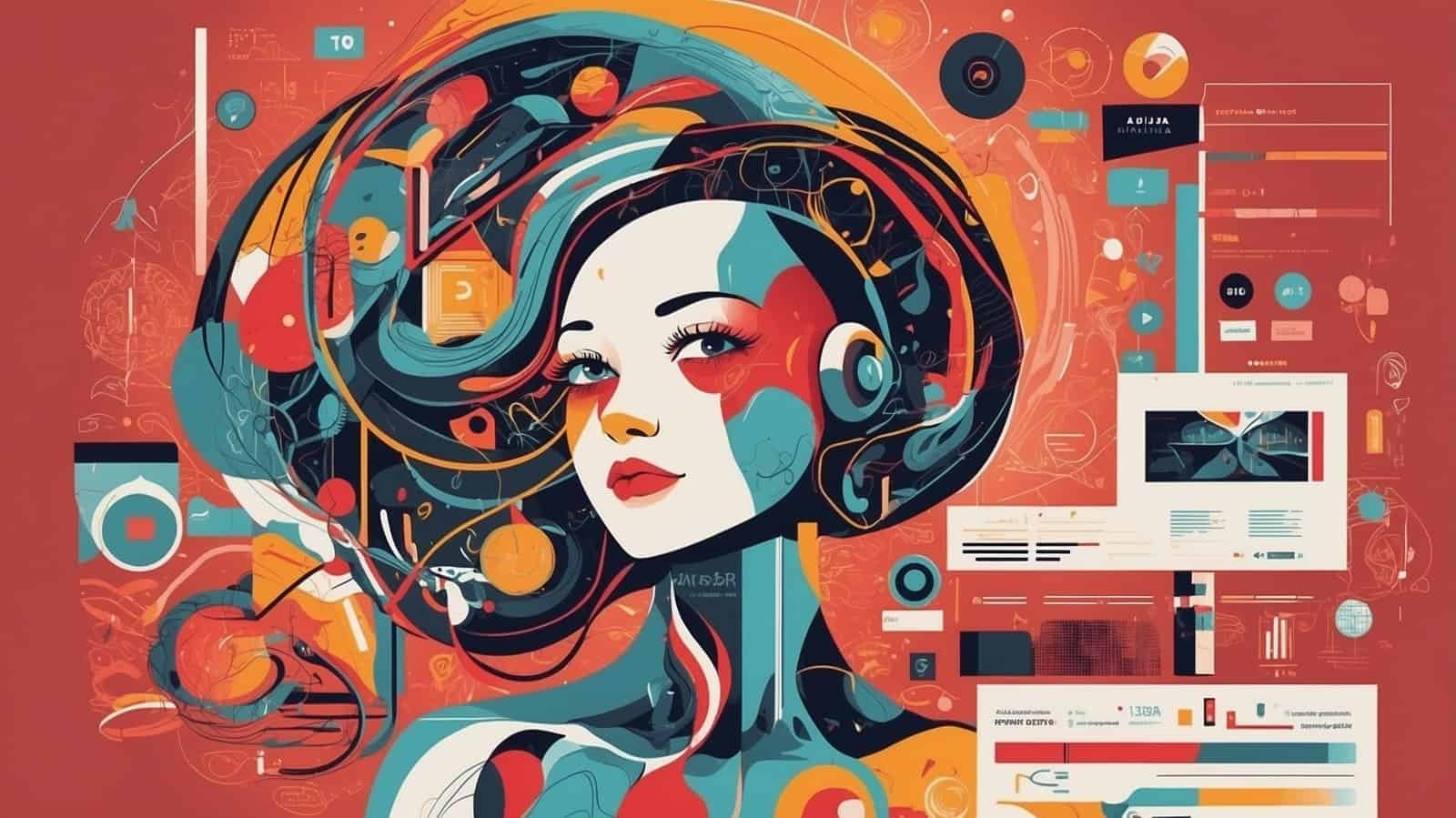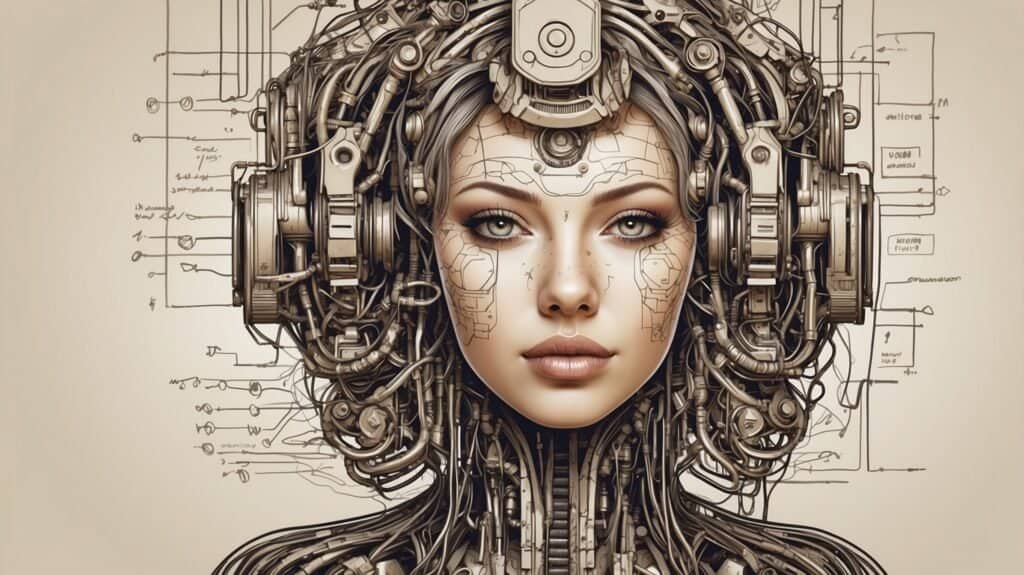In graphic design, staying ahead of the curve means gaining a competitive edge. One key innovation that’s changing the game is Artificial Intelligence (AI). Designers have tools at their disposal that they can use to really ramp up their creativity, scale their processes and increase their output.
Here’s a blog on how to make graphic designs with AI tools.
Along the way, we’ll look at how to use AI for design, give some tips and tricks to help you improve your work, and give a preview of an AI tool that’s in development.
Why AI is a Game-Changer in Graphic Design
Accelerate Your Workflow
What is the advantage of AI for design? If they use AI, designers can do much more tasks in less time. AI can do many times more in the same time when compared with designers. For instance, when designers use Adobe Firefly, designers give them one instruction, and it produces hundreds of results with one click.
You can have a digital background – Adobe Firefly has ready-made options so you don’t have to spend hours manually creating shots or using Photoshop to digitally manipulate them.
And if you’re not a great drawer but have a good idea of what you want, sites such as AutoDraw can help, turning a rough sketch into a real graphic in just a few seconds flat.
Enhance Creativity and Innovation
It’s true that Bourriaud’s aestheticians can be fast – even faster than merely human-assisted. A simple text prompt, such as ‘a surreal image of a dolphin wearing a spacesuit’, can produce hundreds of semi-random designs by 2023, using generative editing tools like Midjourney or Jasper.ai.
These sorts of tools help break through a creative block because they deliver wild design options from one inspirational prompt and they can result in new ideas.
Personalization and Precision
Tools like Khroma literally teach themselves colour schemes intuitive to you using machine learning by doing, based around the input you supply. Your designs look good, but also feel like you.
An AI-driven programme can take old work and create a layout & font template that will ensure your visual identity ties together your different projects.

How to Get Started with AI in Graphic Design
Choose the Right Tools for Your Needs
And there are many more, so which AI tool should you use? The answer, unfortunately, is not clear. Quality can vary significantly. However, if you are a beginner, Canva is a great choice, while for those who know Photoshop, Adobe Firefly might be better.
If you are e.g. working on a Facebook post or a newsletter, Canva produces layouts and elements, and also allows storing them and reusing for future work. If you are working on files that are not intended for the web and/or are more detailed, then you can go to Adobe Creative Cloud , which has Photoshop (with content-aware fill) and Illustrator (with a raster-to-vector AI tool) programs.
Learn How to Use AI Tools Effectively
Just practise! Try to write something small and build up confidence from there. Tool developers offer tutorials and guides on how best to use their products – for example, Adobe provides resources on how to use Firefly’s AI features.
Try small projects first while you gain some confidence, and try not to fall into the trap of biting off more than you can chew by beginning with overly big or technically challenging projects, which can lead to disaster right out of the gate.
Incorporate AI into Your Design Workflow
In fact, for the best use of any AI tool, embed it within your workflow at every step of your creative process, like it or not. Preliminary ideas, magnified by tools such as Jasper.ai, can be further polished up using tools in the Adobe suite.
For example, Jasper.ai produces product descriptions while Let’s Enhance upscales images for printing on business cards and the like.

Overcoming Common Challenges with AI in Graphic Design
Maintaining a Human Touch
One common criticism is that, while the detail of AI-generated work is impressive, it can read as a bit…well, cold and less humanely nuanced. Use AI as a draft. Don’t just set it in stone and call it done; use it as a building block. Add in some personal touches. Make it feel more you.
Understanding AI’s Limitations
Consequently, though it is a very powerful tool, you might find that AI does not always get things artistically right, and it can often help to make editorial adjustments – and remember, these tools are to boost you, not replace you, the designer.
Navigating Ethical Considerations
There’s a good chance that such AI models might be recreating existing works inadvertently – simply because they’ve been trained on massive datasets However, before you use content produced by a tool such as Adobe Firefly, do check how it was generated, and the terms of use in terms of commercial exploitation that it may have been created under. The same applies to Midjourney.
Advanced Tips for Using AI in Graphic Design
Experiment with AI for Branding
Tools like Looka Logo Maker make it easy to design a logo and a business card in minutes, and within that platform, all the brand elements, including the logo, will be consistent across all channels because experimentation takes place within that platform.
Utilize AI for UI/UX Design
Tools such as Uizard come in handy for UI/UX designers, quickly turning designs transformed from sketches into prototypes, allowing for fast iteration before the final development of form and function rises further up the design pipeline.
Optimize Designs for Different Platforms
you can make those designs transferable across platforms with tools such as Remove.bg, which removes backgrounds instantly – ready for upload to Instagram or onto a magazine cover.

The Future of AI in Graphic Design
On the new tools with real-time collaboration and deeper integrations into other creative workflows, we expect more innovative design practices that maintain the global competitiveness.
AR/VR fields will also probably see some wild implementations – even extending possibilities of digital experiences that reach the very limits of graphical realism!
Conclusion: Embrace AI to Enhance Your Design Skills
AI is right and true, not hype and cool! Using the right tools well, makes for an easy walk – faster, easier, better workshops, artefacts, products and services! Right tools – right season – right task – it is stunningly, easily, insightfully evolving, continually, forward on the go!
For beginners as well as pre-intermediates, in addition, this strategy provides a practically infinite number of opportunities for experimenting creatively and playing around with words in an effort to express things slightly differently. In conclusion, it’s suggested that the techniques described in this manual be widely and freely practiced by both experienced and inexperienced users, in order to exploit their potential within the overall search for efficiency, energetic drive and creativity when it comes to the use of language.
Try them out at least a few times, then analyse their effectiveness, drawing conclusions that can be subsequently put to use in further endeavours of this kind, since the avenues at your disposal are practically countless. And don’t forget to make sure that you’re always differentiating the use of an exclamation mark from avoiding the use of proper punctuation, inadvertently or otherwise or, to quote the initial example, comically, if we’re taking irony seriously.

